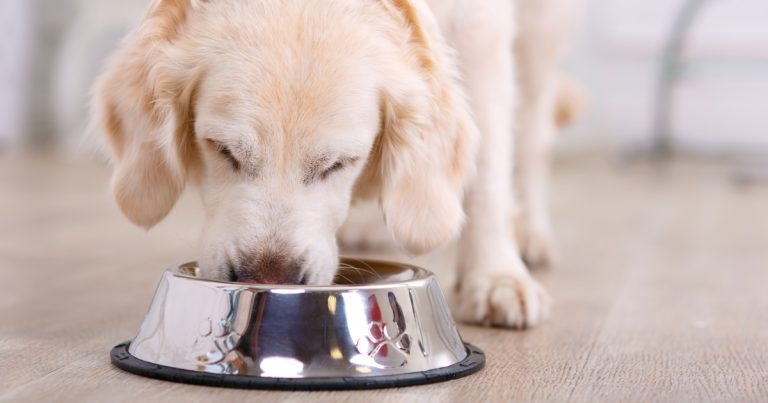29 Jul 2022
Scientists at the University of Bristol said they hope their research will help raise wider public awareness of the risks associated with the dietary programme.

Image © zinkevych / Adobe Stock
The feeding of raw meat to dogs poses “a significant zoonotic threat” because of the potential for spreading antibiotic resistant forms of Escherichia coli, a new study has suggested.
Scientists at the University of Bristol said they hope their research will help raise wider public awareness of the risks associated with the dietary programme.
In response, a leading advocate of raw feeding claimed meat production poses a greater risk and vets can help owners to use the programme well.
But one of the new study’s authors, Matthew Avison, believes the onus should now be on supporters of raw diets to provide firm evidence for any benefits that are claimed for them.
He said: “We can be sure from these comprehensive analyses that if raw feeding stopped carriage of antibiotic-resistant bacteria would reduce – particularly in dogs not exposed to other risk factors.”
The latest study, which has been published in the Journal of Antimicrobial Chemotherapy, analysed 303 dogs living in rural areas and 297 in urban settings.
Twenty (6.6%) of the rural cohort were found to have 3GC-R forms of E coli in analysed faecal samples, of which eight were fed a raw meat diet.
Among the urban dogs, 31 (10.4%) were found to excrete 3GC-R E coli, with seven of them coming from dogs that were fed raw meat diets.
But the researchers also found that forms of the bacteria that produce CTX-M enzymes, which have been identified by other researchers as a significant public health concern, were present in samples from 7 out of 11 raw-fed dogs in the rural group and 4 out of 12 in the urban category.
The paper also reported a link with swimming in rivers among the urban group and acknowledged significant gaps still exist in understanding the spread of E coli in urban settings.
However, it concluded: “This result agrees with earlier, more general observations that raw feeding is associated with excretion of resistant E coli in dogs and adds to the increasing body of evidence that raw feeding poses a significant zoonotic threat.”
The findings also follow an analysis of more than 200 16-week-old puppies published in the One Health journal.
It found that, out of 43 puppies fed a raw diet, 32 carried a form of E coli resistant to at least one antibiotic, and animals fed raw meat sold as pet food were almost equally likely to carry the most commonly found form of the bacteria than those fed from other sources.
That study concluded: “If owners insist on feeding raw meat to their dog, it is essential that they fully understand this practice puts their dog at risk of becoming colonised with bacteria resistant to critically important antibacterials.”
But Christian Vergara, president of the Raw Feeding Veterinary Society (RFVS), argued the overuse of antibiotics in meat production from concentrated animal feeding operation settings poses a much greater risk of spreading infection.
He said most commercial raw food producers use high-pressure production processes to eliminate bacteria and insisted that individual vets’ guidance to owners can further reduce any potential risk.
Dr Vergara said: “We as veterinarians can’t prohibit people from feeding their pets as nature intends, but we can teach them the best way to do it, teaching them the pros and cons [and] hygiene protocols.”
The RFVS’ current position statement, published on its website, argues that pets are a potential source of zoonotic infection regardless of what they are fed and claims it is applying current nutrition research in everyday practice.
It added: “The clinical experience of veterinary professionals and hundreds of thousands of pet owners around the world, together with current scientific literature, demonstrates that a carefully planned RMBD [raw meat-based diet] significantly and measurably improves pet health.”
However, Dr Avison said the new studies added to existing evidence suggesting raw-fed dogs were more susceptible to carrying bacteria capable of causing “opportunistic infections” in humans that could be difficult to treat if they are resistant to antibiotics.
He added: “We hope that these now well-established risks associated with raw feeding [are] becoming increasingly known to the public because then the onus will increasingly be on raw feeding advocates to back up their claims of nutritional benefit with hard evidence.”
A recent study from the University of Liverpool, which found E coli and Salmonella were more commonly present in samples from raw-fed dogs than their non-raw counterparts, also urged caution when citing the answers given by owners in questionnaires on the perceived benefits of a specific diet plan.